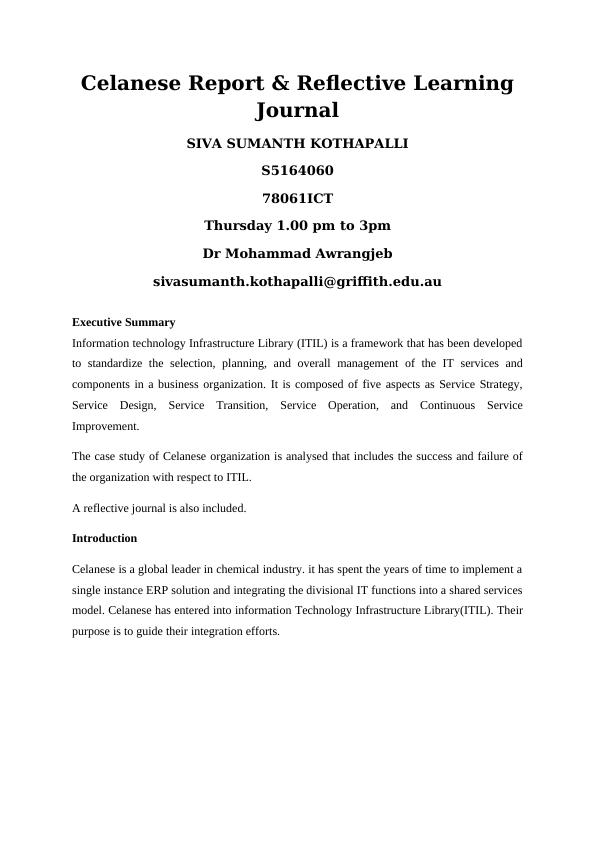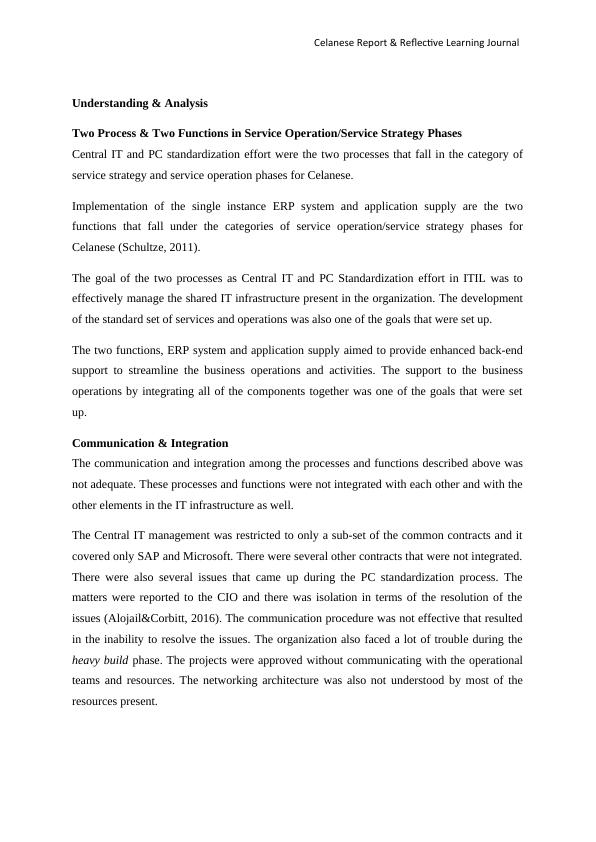Celanese Report & Reflective Learning Journal
Analyzing the success and failure of Celanese organization in implementing ITIL framework and a reflective journal.
8 Pages2699 Words75 Views
Added on 2023-01-17
About This Document
This report discusses the implementation of ITIL framework in Celanese organization, focusing on communication and integration issues. It also explores the benefits and complexity of the Operations Support Model (OSM) and suggests the use of ITSM tool for improved IT service management. The reflective learning journal highlights key learnings and areas of improvement.
Celanese Report & Reflective Learning Journal
Analyzing the success and failure of Celanese organization in implementing ITIL framework and a reflective journal.
Added on 2023-01-17
ShareRelated Documents
End of preview
Want to access all the pages? Upload your documents or become a member.
IT Services Management – Celanese
|6
|2754
|306
ITIL & ITSM: Analysis and Recommendations for Celanese
|15
|5744
|409
Reflective Journal on Celanese Case
|13
|3250
|433
Reflective Journal on ITIL and its Benefits in Organizations
|2
|820
|118
Celanese Report & Reflective Learning Journal – Part 2
|15
|6166
|35
Understanding and Analysis on the Celanese Case
|7
|3271
|414



